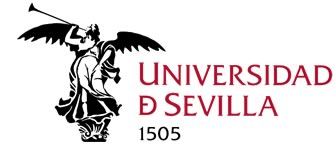Proyecto I+D+i
Relevance of double strand break repair pathway choice in human disease and cancer
Responsable: Pablo Huertas Sánchez
Tipo de Proyecto/Ayuda: 7º Programa Marco de la U.E.
Referencia: FP7-IDEAS-ERC-SG-LS2-278867
Web: http://cordis.europa.eu/projects/rcn/101463_en.html
Fecha de Inicio: 01-01-2012
Fecha de Finalización: 31-12-2016
Empresa/Organismo financiador/es:
- Comisión Europea
Equipo:
- Investigadores:
- Cristina Cepeda García
- María Salud Domínguez Sánchez
- María Jesús Fernández Ávila
- María de los Ángeles Garrido Arines
- Daniel Gómez Cabello
- Fernando Mejías Navarro
- María del Rosario Prados Carvajal
- Isabel Soria Bretones
Contratados:
- Investigadores:
- Cristina Cepeda García
- María Salud Domínguez Sánchez
- María Jesús Fernández Ávila
- Daniel Gómez Cabello
- Fernando Mejías Navarro
- María del Rosario Prados Carvajal
- Isabel Soria Bretones
- Técnicos/Personal Administrativo:
- María Jesús Fernández Ávila
- María de los Ángeles Garrido Arines
Resumen del proyecto:
Double strand breaks (DSBs) repair is essential for normal development. While the complete inability to repair DSBs leads to embryonic lethality and cell death, mutations that hamper this repair cause genetically inherited syndromes, with or without cancer predisposition. The phenotypes associated with these syndromes are extremely varied, and can include growth and mental retardation, ataxia, skeletal abnormalities, immunodeficiency, premature aging, etc. Moreover, DSBs play an extremely relevant role in the biology of cancer. Alterations in the DSBs repair pathways facilitate tumour progression and are selected early on during cancer development. On the other hand, DSBs are the molecular base of radiotherapies and chemotherapies. This double role of DSBs in both, the genesis and treatment of cancer makes the understanding of the mechanisms that control their repair of capital importance in cancer research.
DSBs are repaired by two major mechanisms that compete for the same substrate. Both ends of the DSB can be simple re-joined with little or no processing, a mechanism known as non-homologous end-joining. On the other hand, DSBs can be processed and engaged in a more complex repair pathway called homologous recombination. This pathway uses the information present in a homologue sequence. The balance between these two pathways is exquisitely controlled and its alteration leads to the appearance of chromosomal abnormalities and contribute to the diseases aforementioned. However, and despite its importance, the network controlling the choice between both is poorly understood.
Here, we propose a series of research lines designed to investigate how the choice between both DSBs repair pathways is made, its relevance for cellular and organismal survival and disease, and its potential as a therapeutic target for the treatment of cancer and some genetically inherited disorders.

